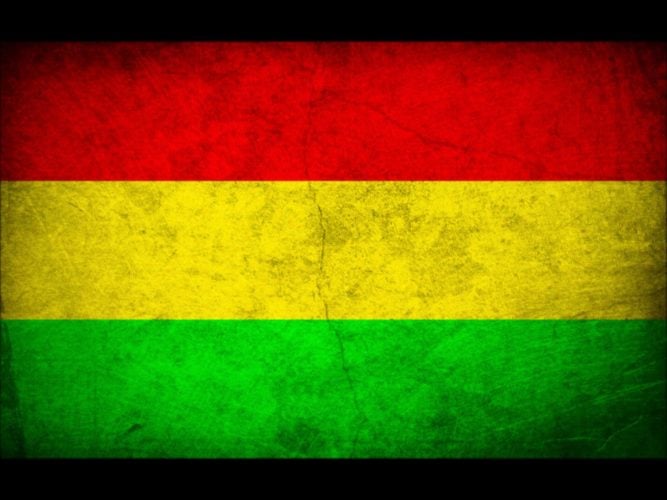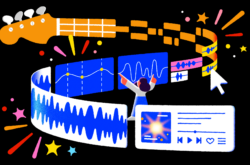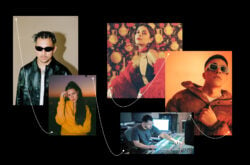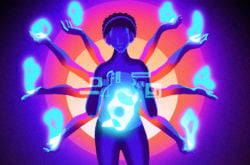Part of being a competent producer is being knowledgeable of genres outside your comfort zone.
In this article, we take a look at five elements that make up reggae music and how you can use them in your productions.
Sign up for Splice Sounds and experiment with relevant samples yourself via the “Reggae: Start Here” Collection.
A brief history of reggae music
Reggae is a genre of popular music that originated out of Jamaica in the 1960s, made famous by artists such as Bob Marley, Peter Tosh, and Jimmy Cliff. It grew out of traditional Jamaican musical styles such as ska and was heavily associated with Rastafarianism, a religious movement that took root in Jamaica in the 1930s. Since then, reggae has been a musical voice for Jamaicans to tell the world about their history, culture, and struggles in a political system that had enslaved and marginalized many Jamaicans. To this day, a lot of reggae music has lyrical content that touches on political and socio-economic issues in Jamaica and around the world.
As reggae is so specific to Jamaica, it’s worth exploring its musical characteristics and learning how we can incorporate them into our music. You may not want to compose a whole reggae tune, but you may find that learning about a specific genre is a great help in learning more about music, and more specifically, grooves.
To ascertain how a musical style works, we need to look at it from a few different perspectives. For this week, we’ll break down and analyze five core characteristics of reggae music: its vocal style, tempo / meter, instrumentation, harmony, and rhythmic content.
Breaking it down: 5 musical characteristics of reggae
1. Vocal Style
Since reggae originated from Jamaica, the Jamaican accent and “singjay”—a distinctive style that combines singing and toasting—are evident in most reggae music. Lyrically, much of reggae music comes from a deep sense of animosity and the need for survival and to be fighters.
In terms of production, reverb and dub delays are often used to create a sense of space. You might also hear these effects applied to other elements in the arrangement, like the drums and guitars.
2. Tempo and meter
The average tempo of a reggae tune ranges between 80 – 110 BPM, which is slightly slower than the usual commercial pop song. This can be attributed to how reggae has a strong but spacious groove that would only make sense with slower tempos. A decent amount of reggae songs, if not all, are written using the 4/4 time signature with heavy emphasis on the backbeat (more on that later).
3. Instruments
Reggae employs similar instrumentation as pop tunes found in the United States. The instruments that form the foundation of a typical reggae song would be drums, electric bass, electric guitar, and keyboard. However, over the years, other instruments such as horns, brass, and afro-cuban percussion have also been introduced to reggae.
It’s worth noting that reggae music is bass-heavy. Most reggae songs have the bass upfront in the mix, with low subs that are meant to rock the dance floor.
4. Harmony
The chord progressions of reggae songs are fairly straightforward. Most of the chords follow common progressions such as I – V – vi – IV (in the key of C, this would be C – G – A min – F), like in Bob Marley’s “No Woman No Cry.” Peter Tosh used a two-chord progression of i – VII (in the key of A minor, this would be A min – G) in “Johnny B Goode,” which is pretty popular in many reggae hits.
5. Rhythm
Everything about reggae has to do with rhythm. One can clearly differentiate a reggae tune from another genre by just identifying the rhythmic patterns. Reggae incorporates a high amount of off-beat rhythms. These are usually staccato beats played by a guitar or piano (sometimes both) on the off-beats (also known as “upbeats”) of a measure. This gives most reggae music a ‘jumpy’ feel. The “one drop rhythm” is another pattern often noticed in reggae. In application, the third beat in the measure is given more emphasis while having no emphasis on the first beat.
The bass guitar plays an important role in holding the rhythm down in reggae. Most reggae bass parts are just repeating riffs (melodic patterns) with frequent octave jumps. While the bass provides the weight and anchor, other instruments such as percussion and guitar fill in the ‘holes’ to create complex polyrhythmic patterns.
How to get started
Now that we’ve discussed the core characteristics of reggae music and listened to some iconic references, you should have a basic foundation for getting started with creating your own reggae-inspired track. A great way to get inspiration is by using Splice Sounds. With over two million loops, one-shots, and presets (and thousands of reggae-specific sounds) at your disposal, it’s pretty easy to start searching for samples, splicing them, and adding them to your project to get your creativity flowing.
Looking for feedback on your track from other music creators? Join the Splice Discord to connect with an ever-growing community of producers, instrumentalists, and engineers.
Get started with our Collection of curated reggae sounds:
January 26, 2023



